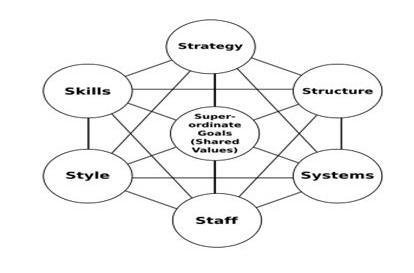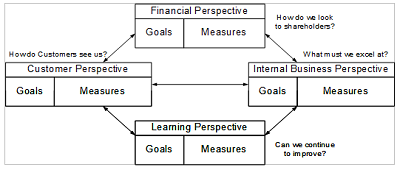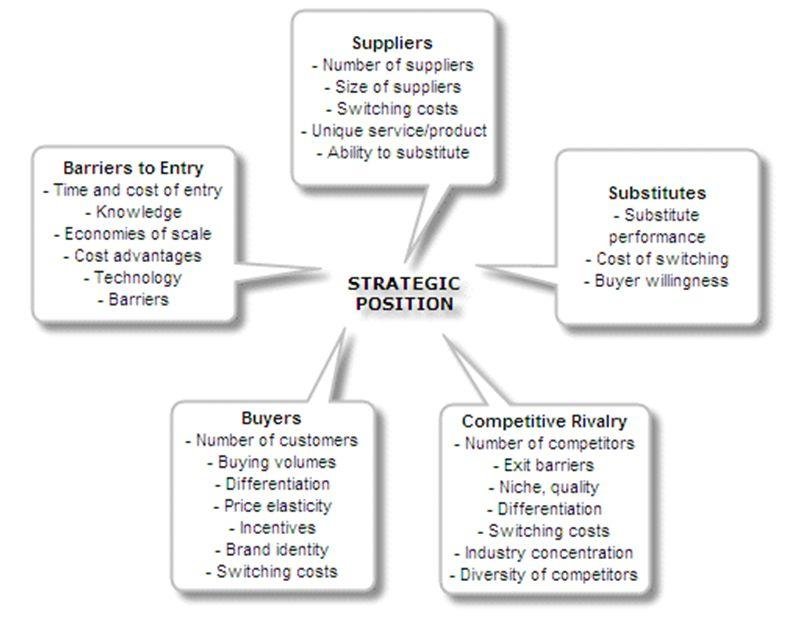Introduction: Brief background history
Power Water Corporation (PWC) is public corporation that avails water, sewerage and electricity services to an estimated 80,000 clients spread across Australia’s Northern Territory. In measurement, this expansive region sums up to 1.3 million square kilometres (Power Water Corporation, 2012).
To ensure that this business entity retained its competitive advantage of meeting the ever highly demanded resources, its management has strategically established 5 core values. These values summarized the themes of the ‘missing’ vision and mission statements.
Despite the management of the corporation insisting on its website that the authority has presented an inspiring success story since its establishment, this report established that this was not achieved on a silver platter.
This was and is still the case because a number of inefficiencies and challenges did and continue to exist within its operational facets. As such, the author of the report went ahead to use various theoretical frameworks to practically identify and analyze the activities and areas for improvement. This was demonstrated in the succeeding paragraphs below.
Presentation and analysis of report findings
Analysis of internal capabilities based on McKinsey’s 7’s of strategy and the balanced scorecard concept
In this section, the author decided to apply the theoretical frameworks derived from the above change diagnostic and measurement tools to analyze the current status of PWC’s internal capabilities. This was done with the intention of identifying gaps and weaknesses for strengthening the corporations business.
This was so because as Simister (2011a) asserted, there was no ‘one size fits all’ solution that can guarantees continued success in business. This important finding was also upheld by two reputable scholars, Kaplan and Norton (2006), when they revealed that these change tools were vital in determining a business’ internal capability status.
This was the case since majority of corporations were made up of various enterprise units and multiple supports. However, Kaplan and Norton (2006) averred that the efforts of various units were not properly coordinated.
This resulted in emergence of conflicts, diminished performance and reduction in opportunities. PWC was no exception to this assertions hence the need to apply findings from the two measurement tools in the manner below.
McKinsey’s 7’s
To begin with, the author derived that the 7-S framework was important since it offered sound approaches to combining all essential factors that sustained strong organizations (Cadle et al., 2010, p.19). To add, research established that this model was divided into two broad categories namely the ‘soft’ and ‘hard’ issues that affected the internal operations or capabilities of a business entity (Burtonshaw-Gunn, 2009, p.240).
The ‘soft’ issues were constituted by the following S’s: style, staff, skills, and shared values (Torres, 2007, p.10). Contrary to their name, various researchers have pointed out that they were the most difficult to be identified or studied in any organization (Dobson et al., 2004, p.124).
On the other hand, the ‘hard’ S’s were constituted by structure, systems and strategy. They were easy to be identified and analyzed in any organization (Fleisher & Bensoussan, 2007, p.194).
Figure 1 below illustrated the relationship between the 7S. Note that the shared values or subordinate goals are what bound organisations together

Source: Simister, 2011a.
A correlation of the 7S’s to PWC’s internal capabilities was carried out through answering of formulated research questions for a better understanding. This was implemented below:
Strategy: According to Saxena (2009), this perspective was built on how the corporation has taken actions or positioned itself in responses to anticipated changes and with a view of attaining a competitive advantage (p.211).
To answer this, this report found out that PWC had hired an experienced and distinguished General Manager of Strategy and Corporate Affairs, Mr John Devereaux in the latest year of 2012. The strategy manager had brought over 16 years of expertise in managing successful strategies in both the energy and banking industries.
As such, he was now been tasked with innovating and implementing PWC’s strategy, stakeholder management, planning and policy roles (Power Water Corporation, 2012). This is likely to realize profits and general success.
Structure: Tan (2010) asserted that this referred to how people and tasks were divided and specialized (p.31).
On this, this report established that an organizational structure or mechanism was missing to show how various staff were allocated project duties at PWC. This was likely to hinder performance at the corporation.
Systems: Wankel and Stoner (2009) held the view that this involved an assessment of the informal and formal procedures used to manage this corporation (p.320).
The author established that the management had implemented the planning function for most of its upcoming projects. For instance, they posted the upcoming project and sewerage works and clearly described the suburbs in which the works were to be undertaken. This was done on their website. However, details of resource allocation, performance measurement and budgeting were held in secrecy.
Staff: Drawing inferences from Redman and Wilkinson (2002, p.154) and Salwan (2007), the report assessed the total number of staff, their backgrounds plus their competencies. How are they recruited, trained, and promoted.
Statistics from Water Services Association of Australia (2010) highlighted that the corporation employed an estimated 900 Territorians. Jobs are advertised on the vacancies’ section of its website. Potential applicants are then shortlisted and notified of their interview schedules. Winning candidates are then chosen to join the various career units at the corporation.
However, there exists no formal information on how the training, promotion and interactions are carried out.
Skills: Borrowing from Bhattacharyya (2010), the author posed the question, “does PWC boast of the distinctive competencies of the organization”?
The answer stated that the organization has been characterized by recruiting highly qualified staffs to join its manpower function. For instance, the recruited strategy manager was a highly qualified scholar who had achieved great results in his previous job assignments.
Nevertheless, a graduate recruitment program has been in place to ensure that able and highly qualified graduates are recruited into various units of the corporation (Power Water Corporation, 2012).
Style/Culture: Doole and Lowe (2005) articulated that this virtue concentrated on the review of the existing leadership style (p.154). (How do managers spend time, focus on, and make decisions). More important, Basu (2004) expounded by stressing on the need to identify what were the dominant values, beliefs and norms that defined the culture of the corporation (p.278).
Being a state corporation, this report found that participative (or democratic) leadership style had seen unit managers offer guidance to their assigned juniors. Nonetheless, these project managers participated in group brainstorming sessions and consumed inputs from their junior staff.
The corporation held regular board meetings to deliberate on emerging issues. The dress code for the corporation required that workers put on official wear all weekdays except Friday.
Shared Values: Gupta’s (2007) work insisted that this involved a review of major sets of values that were commonly shared thus forming guiding principles of the mission, vision and value statements (p.123).
PWC was guided by 5 major values that also topped up as its vision and mission statements. These were ensuring safety, commitment, communication, integrity and teamwork. There was also a customer charter that stressed on the need to set service standards and serve customers in a better way.
Balanced Score Card (BSC)
This framework provided a short summary of the key performance measures (both non-financial and financial) of PWC. As such, it assisted in knowing what the business was trying to achieve through its current business strategy. Moreover, using Niven (2011) findings, this report noted that it depicted an overview how well PWC’s management had succeeding in implementing current projects (p.39).
In deciding to use this model for this report, the author borrowed from the works of Kaplan and Norton (2006) that stated that its innovation enabled companies in designing operating systems that aligned structure with strategy and also contributed to enriching the four other S’s: staffing, skills, style, and shared values (p.38).
Figure 2 showing the 4 perspectives of the BSC

Source: Simister, 2011b.
Based on the above therefore, this report looked a number of measures that were balanced across the four perspectives. Again, to help in the understanding of the report findings, the author choose to include research questions which were answered in the form of findings as was demonstrated below.
Financial – how does PWC appear to its shareholders?
The corporation appeared as a successful business in its Territory. This was supported by the finding that it amassed assets in excess of an estimated $1.2 billion. Moreover, it serviced an estimated 80,000 customers. This evidenced signs of success.
Customer – how is the corporation viewed by its clients?
The corporation was viewed as a caring and a fair service provider. This was so because it had gained a reputation of receiving and proving quick feedbacks to client queries, concerns, and various complains.
Internal Process – was the corporation developing its internal processes to deliver the needed performance for its customers as well as shareholders?
On this sub-theme, the report established that the corporation had received positive compliments for sourcing for additional water and energy resources to meet the demands of its ever-growing residential and commercial businesses in its Territory.
Learning and growth – was the corporation developing a capacity to ensure its sustained future?
Also, this report established that the corporation was establishing and implementing projects and programs that pointed to a brightening future. For instance, the management had sat down and come up with a detailed list of planned works.
Moreover, they were carrying out an awareness campaign that called on the clients to help in saving and preserving the planet; a reference to the need to observe environment management efforts. These were to be implemented through proper use of electricity and water.
Scanning of the external environment using Porter’s Model
The external scanning involved a review of variables that were outside the corporation. As such, they were considered to be less controlled by the top management. These variables were either related to economic, socio-cultural, political, technological and legal forces (Thenmozhi, n.d.).
For this report, the author used Porter’s Five-Forces Model that involved analyzing the threat posed by a new entrant, rivalry by current competitors, pressure as posed by buyers, pressure from suppliers and pressure from the substitutes.
Figure 3 showed Porter’s Model

Source: Maxi-Pedia Homepage, 2012.
Application of the 5 forces at PWC
Barriers posed by new entrants
On this force, the author established that being state owned; the entity was the sole provider of electricity and water in its region (State Water Corporation Act, 2010). As such, it benefitted from this monopoly.
Supplier Pressure
PWC did not avail any statistics on the number of suppliers that formed part of its business network.
Customer/Buyer Pressure
The corporation had an estimated 80,000 consumers. They posed pressure by making complaints related to power blackouts, reconnections, compensations, stolen equipments
Substitutes
The data on whether the corporation had a tendency of replacing its current suppliers had been hidden from its client as well as public consumption.
Competitive Rivalry
On the competition posed by rivals, the author identified Australian Capital Territory Electricity and Water Corporation (ACTEW) as the main rival.
This, also being a state corporation headquartered in Canberra City, had sold its reputation as one of Australia’s most successful service corporation. It acted professionally and fairly with its stakeholders and business partners, an attribute that acted as a challenge and benchmark for PWC (ACTEW Corporation, 2012).
Proposed Recommendations
The following events for improvements were derived from the gaps and shortcomings that clearly emerged from the analysis above
Figure 4 of PWC’s graphical timeline showing an approximate time-scale of proposed improvement events
In conclusion, the insight from this PWC strategy report revealed that change managers should not dwell more on searching perfect structures for their change strategies. Instead, they should be flexible and willing to choose structures that are reasonable and seem to work well without causing major conflicts (Kotter & Schlesinger, 2008, p.4).
At this level, they can then design customized and cascaded systems and then link them to form their unique strategies.
References
ACTEW Corporation, (2012). Mission, stakeholders & values. Web.
Basu, R. (2004). Implementing quality: A practical guide to tools and techniques: Enabling the power of operational excellence. London: Cengage Learning EMEA.
Bhattacharyya, D. K. (2010). Cross-cultural management: Text and cases. New Delhi: PHI Learning Pvt. Ltd.
Burtonshaw-Gunn, S. (2009).The essential management toolbox: Tools, models and notes for managers and consultants. West Sussex, England: John Wiley and Sons.
Cadle, J. et al. (2010). Business analysis techniques: 72 essential tools for success. Swindon, UK: BCS, The Chartered Institute.
Dobson, P. et al. (2004). Strategic management: Issues and cases. 2nd edn. Victoria, Australia: John Wiley & Sons.
Doole, I. & Lowe, R. (2005). Strategic marketing decisions in global markets. London: Cengage Learning EMEA.
Fleisher, C. S. & Bensoussan, B. E. (2007). Business and competitive analysis: effective application of new and classic methods. New York: FT Press.
Gupta, B. L. (2007). Governance and management of technical institutions. New Delhi: Concept Publishing Company.
Kaplan, R. S. & Norton, D. P. (2006). Alignment: Using the balanced scorecard to create corporate synergies. Boston, Massachusetts: Harvard Business Press.
Kotter, J. P & Schlesinger, L. A. (2008). Choosing strategies for change. Harvard Business Review. Web.
Maxi-Pedia Homepage, (2013). Five Forces Model by Michael Porter. Web.
Niven, P. R. (2011). Balanced scorecard: Step-by-step for government and nonprofit agencies. 2nd edn. New Jersey: John Wiley and Sons.
Power Water Corporation, (2012). About us. Web.
Redman, T. & Wilkinson, A. (2002).The informed student guide to human resource management. London: Cengage Learning
Salwan, P. (2007). Best business practices for global competitiveness. New Delhi: Sterling Publishers Pvt. Ltd.
Saxena, M. S. (2009). Capability management: Monitoring & improving capabilities. New Delhi: Global India Publications.
Simister, P. (2011a). McKinsey 7S framework for strategic fit. Web.
Simister, P. (2011b). Balanced scorecard as a performance measurement system. Web.
State Water Corporation Act, (2010). New South Wales Consolidated Acts: State Water Corporation Act 2004-as at 1 July 2010-Act 40 of 2004. Web.
Tan, J. K. H. (2010). Adaptive Health Management Information Systems: Concepts, Cases, and Practical Applications. 3 edn. USA: Jones & Bartlett Learning.
Thenmozhi, M. Strategy formulation: An overview. Management Science 1. Indian Institute of Technology Madras. Web.
Torres, H. R. (2007). Creating added value for corporations through enhanced asset protection management. A Dissertation Presented at Capella University School of Business. Published by ProQuest.
Wankel, C. & Stoner, J. A. F. (eds.) (2009). Management education for global sustainability. USA: IAP.
Water Services Association of Australia, (2010). Power and Water Corporation. Web.